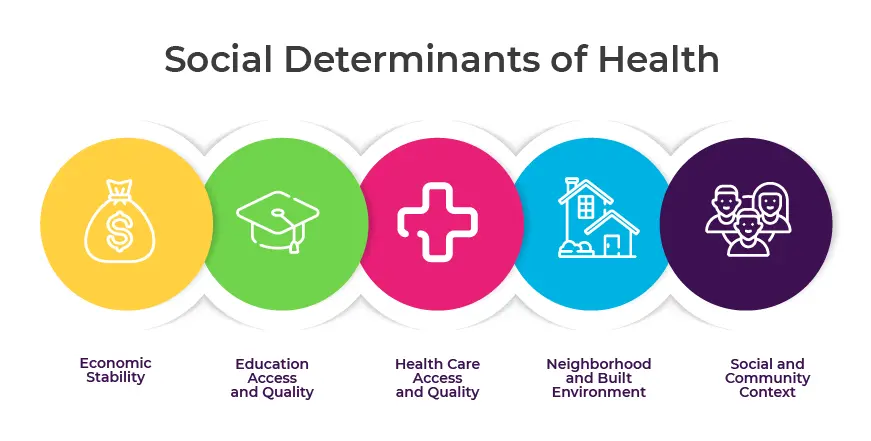Social Determinants of Health PEI vs Ontario
- jc645587
- Oct 16, 2022
- 4 min read
Updated: Dec 6, 2022

When researching resources to determine the Social Determinants of Health (SDH) in my home province of Prince Edward Island (PEI), I found the 2021, Chief Public Health Officer’s Report, which discussed many SDH and how PEI compared to provinces across Canada. While it was once thought that healthy populations were largely determined by a strong healthcare system responding to health needs, we now understand that the health of a population is predominantly driven by various social factors that shape the conditions in which people, families, and communities live, work, learn and play. These factors are collectively called the social determinants of health. Taking action on these has the greatest potential to improve population health outcomes and to address the root causes of illness and injury before they even occur (Government of Prince Edward Island, 2022).

Image: What Are Social Determinants of Health | Sunshine Community Health Center (sunshineclinic.org)
PEI’s rates for communicable diseases (i.e., hepatitis C, COVID-19, sexually transmitted and blood-borne infections) were much lower than Canada’s. When looking at cancers, PEI and Canada’s rates for lung and colorectal cancers were similar, but PEI had lower breast and prostate cancer rates than Canada. For chronic conditions, PEI was comparable to Canada overall. While PEI had lower rates of ischemic heart disease and diabetes than Canada, PEI’s rate for hypertension was higher than Canada’s, and PEI’s rate for chronic obstructive pulmonary disease (COPD) was comparable to Canada’s. As with chronic conditions, when indicators of mental health and overall well-being were considered, PEI was similar to Canada overall. While PEI residents were more likely to be treated for mood and anxiety disorders than Canadians, PEI residents were also more likely than Canadians to report having no or low work-related stress. On self-perceived general health, mental health, life stress, and life satisfaction, PEI residents and Canadians were similar (Government of Prince Edward Island, 2022).

PEI was doing worse than Canada on many health determinants, and this should be an area of concern. Health determinants are typically precursors to population health status, and as health determinants worsen over time, so will population health status. Hence, it is imperative to address health determinants before they begin to negatively impact the health of PEI residents. Overall, PEI was doing worse than Canada on structural determinants of health (i.e., the mechanisms that create social class divisions, define socioeconomic status, and are the root causes of health inequities (Government of Prince Edward Island, 2022).
Compared to Canadians, PEI residents were more likely to be unemployed (and looking for work) and have low income after tax; PEI residents also had lower family incomes than Canadians. On intermediary determinants of health, such as personal health practices and coping skills, PEI fared worse than Canada overall—PEI residents were more likely to smoke and less likely to be food secure or meet daily requirements for physical activity and fruit and vegetable consumption. PEI residents were also less likely than Canadians to make changes to improve their health or even have the intent to make such changes (Government of Prince Edward Island, 2022). PEI is doing much better than Canada on cross-cutting determinants of health (i.e., sense of community belonging and social support), which may be unique strengths that PEI can leverage to improve structural and intermediary determinants of health (Government of Prince Edward Island, 2022).
In conclusion PEIs SDH has many pros and cons. Living in a small rural province, many residents do not have equal access to health care as they would in a larger province like Ontario. When patients need specialized or even cardiac surgery, they must be transported to Nova Scotia or New Brunswick, which in return has a large burden on the PEI and neighboring provinces health care system demand. This also causes a large wait time for sometimes life saving surgery that would be avoided in larger city centers.
PEI also has large unemployment rates, with a number of residents mainly working seasonal jobs as our main industries are fishing, farming and tourism. In return this allows many residents to have lower income and rely on government assistance, something that would not be seen in other larger provinces that do not rely on these industries to sustain their provinces wealth.
Additionally, PEI is also an aging province, with many seniors who lack education specifically around healthy life habits. This generational population is composed of years of unhealthy habits such as: smoking and drinkers of alcohol which will likely be passed down to the next generation as this patient population is reluctant to change their unhealthy habits. However, there are some pros to living in a small province such as PEI including: the community strength of Islanders and less stressful work and home environments when compared to other provinces across Canada.
Resource
Government of Prince Edward Island. (2022). 2021 Chief Public Health Officer Report.
Retrieved on October 16, 2022 from
https://www.princeedwardisland.ca/sites/default/files/publications/cpho21_report_web.pdf.



Comments